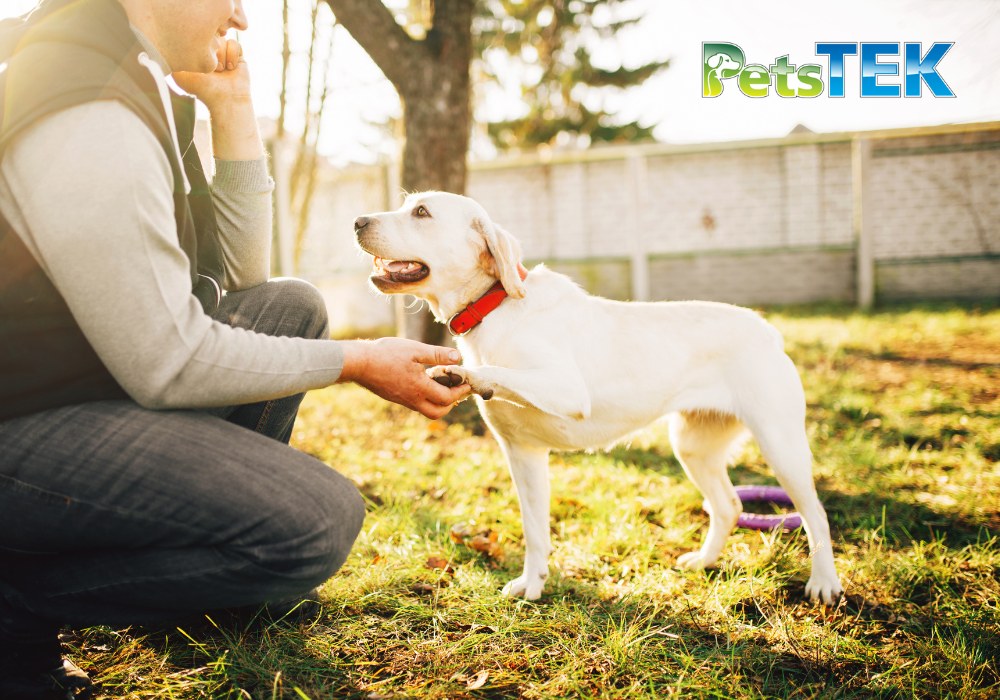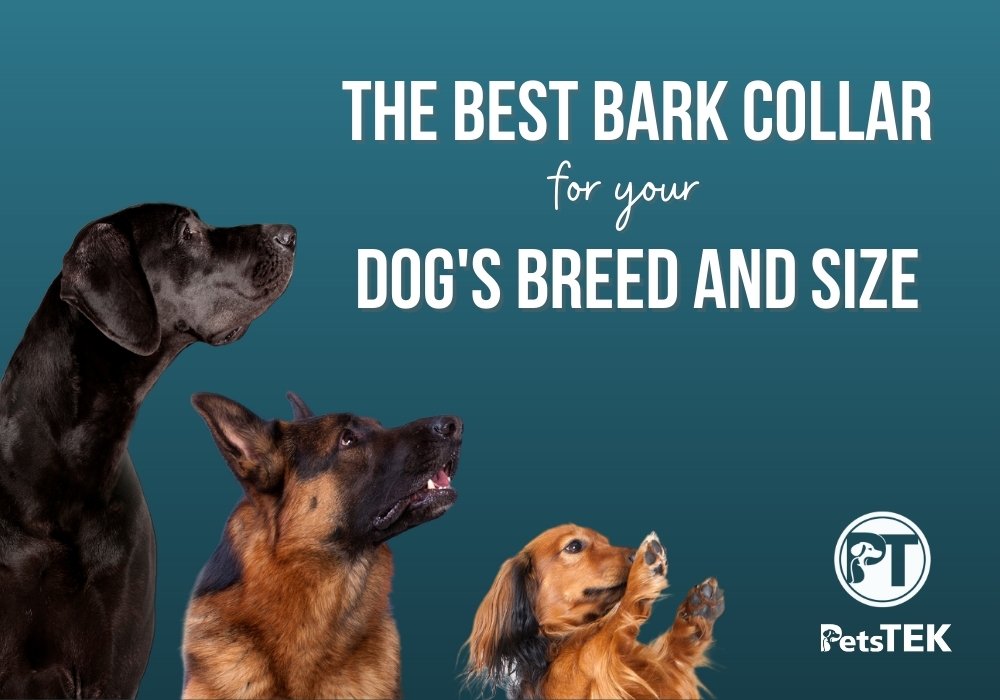Best Bark Collars for Labrador Retrievers – Top Picks

Labrador Retrievers are renowned for their friendly, energetic, and loyal nature. However, excessive barking can sometimes be a problem for Lab owners. While it's a natural form of communication, persistent barking can be disruptive.
This guide will help you find the most effective, safe, and comfortable bark collar for your Lab.
Why Do Labs Bark?
Before exploring the best bark collar options, it’s helpful to understand why Labs bark. As highly intelligent and social dogs, Labrador Retrievers communicate through barking for a variety of reasons:
- Excitement: Labs may bark when they’re excited, especially when playing or seeing new people.
- Attention-Seeking: Some Labs bark to get your attention, whether for food, playtime, or affection.
- Boredom: If a Labrador doesn’t get enough physical or mental stimulation, it may bark out of frustration.
- Alerting: Labs may bark to alert you to a visitor or something unusual in their surroundings.
Understanding these behaviors will help you determine whether a bark collar is a suitable option for your Lab.
How to Choose the Best Bark Collar for Your Lab
Choosing the right bark collar for your Lab requires considering a few factors:

1. Size and Weight of Your Lab
Adult Labradors, according to the AKC, typically weigh between 55 to 80 pounds with a neck size ranging from 18 to 24 inches. Given their size, it's crucial to choose a bark collar designed for medium to large dogs.
Ensure the collar is adjustable and fits comfortably – neither too tight nor too loose – to avoid discomfort and ensure proper functionality. A well-fitted collar is key to both effective training and your dog’s comfort.
2. Temperament
Labs are typically friendly and social, but some can be more sensitive than others. If your Lab is easily startled, opt for a vibration or ultrasonic collar instead of a shock collar. For more stubborn dogs, a static bark collar with adjustable settings may be necessary.
3. Safety Features
Safety is a top priority when selecting a bark collar. Look for collars with safety features like automatic shut-off, adjustable intensity levels, and sensors that prevent unnecessary activation (e.g., from other dogs barking nearby).
4. Durability
Labs are an active, high-energy breed, known for their love of outdoor activities. Your chosen collar needs to withstand wear and tear from their active lifestyle. Look for collars made from tough, waterproof materials that can handle everything from daily walks to swimming and rough play. Durability ensures that the collar will last longer and maintain its functionality even in demanding conditions.
Remember, the ideal bark collar should not only aid in training but also ensure your dog stays comfortable during their daily adventures.
Top Bark Collar Choices for Labs
Looking for the perfect bark collar to help your Lab with excessive barking? We've curated a list of top-rated options:
1. Dogtra YS600
Best for Dog Size: 35 pounds and up
Neck Size: Up to 28"
Collar Receiver Size: 3.15” x 1.37” x 1.77”
Collar Receiver Weight: 4.4 oz
The Dogtra YS600 is a high-performance bark collar designed for larger dogs, making it ideal for Labs. It features 10 adjustable levels of static stimulation, allowing you to customize the intensity based on your dog's temperament. It also has a built-in HPP vibration system to alert your dog before any correction is applied, helping with faster learning.
Pros
- Highly durable
- Waterproof
- Long battery life
- Great for Labs with persistent barking
Con
- May be too intense for more sensitive dogs
2. SportDOG NoBark SBC-R
Best for Dog Size: 8 Pounds and Up
Neck Size: Up to 22"
Collar Receiver Size: 2.75" x 1.125" x 1.125"
Collar Receiver Weight: 3.5 oz
The SportDOG SBC-R offers advanced bark detection technology with three training modes: temperament learning, progressive correction, and user-select mode. This flexibility allows you to tailor the collar to your dog’s specific needs. Its waterproof design ensures it holds up in all weather conditions, making it great for Labs that love outdoor activities.
Pros
- Multiple correction modes and levels
- Automatic safety shut-off
- Rugged and waterproof design
Con
- Maybe not suitable for dogs with mild barking issues
3. PetSafe PBC00-12789 Vibration Bark Control Collar
Best for Dog Size: 8 Pounds and Up
Neck Size: Up to 27"
Collar Receiver Size: 2.24” x 1.06” x 1.1”
Collar Receiver Weight: 2.61 oz
The PetSafe PBC00-12789 uses vibration correction only, making it a more humane option for sensitive Labs that don’t respond well to static stimulation. With 10 levels of vibration, the collar adjusts based on your dog's bark intensity, and it's waterproof, perfect for outdoor use.
Pros
- Gentle, vibration-only correction
- Adjustable intensity
- Budget-friendly
Cons
- May not be effective for persistent or stubborn barkers
- Not rechargeable, which may require frequent battery replacements
4. E-Collar Technologies BP-504 Barkless Pro
Best for Dog Size: 5 pounds and up
Neck Size: Up to 23"
Collar Receiver Size: 2.36” x 1.57” x 1.57”
Collar Receiver Weight: 1.9 oz
The Educator BP-504 is a versatile collar designed to stop excessive barking. It offers three modes – Auto, Tone-Only, and Manual – allowing you to tailor the correction based on your dog’s behavior. With three adjustable sensitivity levels, it effectively addresses both barking and whining. The advanced vibration sensor minimizes false triggers, while the bark counter helps track your dog’s progress. Waterproof and shock-resistant, it’s durable enough for any activity.
Pros
- Customizable settings
- Tone-only option
- Waterproof
- Durable
Con
- Price point is higher compared to other options
Bark Collar Training Tips for Lab Owners
Introducing a bark collar to your Labrador requires patience and consistency. Here are a few tips to make the process smoother:

1. Gradual Introduction
Start by letting your Lab wear the collar without activating it for a few days. This helps your dog get used to the collar without associating it with any negative experience.
2. Positive Reinforcement
Whenever your Lab stops barking after the collar activates, reward them with praise or a treat. Positive reinforcement helps them understand the behavior you’re encouraging.
3. Avoid Overuse
Bark collars should not be worn for extended periods, especially when you are not around to supervise. Use the collar only during specific training sessions or when barking is most problematic, such as during walks or visits from guests.
Note: Consulting with a professional dog trainer is crucial before using a bark collar, particularly if you're unfamiliar with them.
Have you tried any bark collars for your Labrador? Share your experiences in the comments below. Check out our other articles on dog training and behavior management!
You might also enjoy...
-
Posted in
Dog Training, E-Collar Info & Guides






